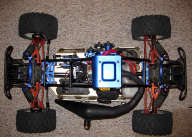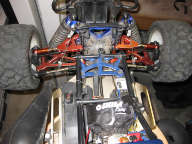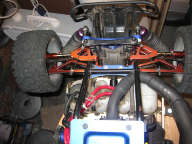- Thread starter
- #121
Great thread, tons of information. Just purchased a TT should arrive in a few days. Could you show pics of tempering the diff cups? Haven't really seen a step by step on it yet. Not really sure the whole process. Thanks again, learned alot from this thread.
Thanks. Glad it's been helpful. You'll love the vehicle, it's a lot of fun. There are some really great threads over at http://www.redcatrampageforum.com (sister site of LSF and HBF) which are super helpful as well. That's where I got most of my info from. Kryptonite, mooman and some of the other guys over there and here are great for information so don't hesitate to ask anything!
The tempering is pretty simple. I just ordered the diff cups so I should have them by the end of the week. I originally did this to all the cups but I took a pretty hard flip and all the weight landed on this side. Dogbones didn't bend or anything so that was a plus, although, I would have rather bent a dogbone then pull apart the gearbox.
The first time around I used one of those butane torches like one from Home Depot or Walmart. Cheap, comes with everything. I just basically heated it up until it turned blue and then let it cool down. Some people drop it in motor oil but I just let it cool. I think the motor oil is after you heat it to cherry red, but it doesn't need to go that far. I'll take some pics of it though when I do it which hopefully will be by the weekend.




